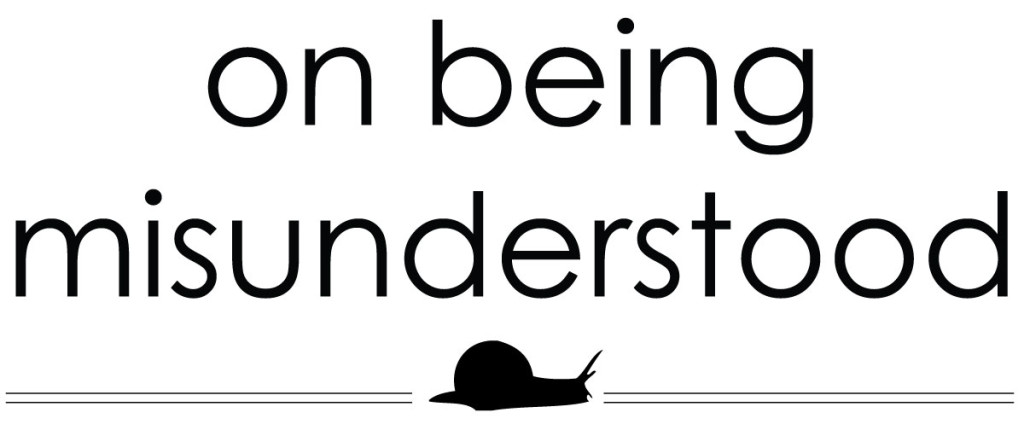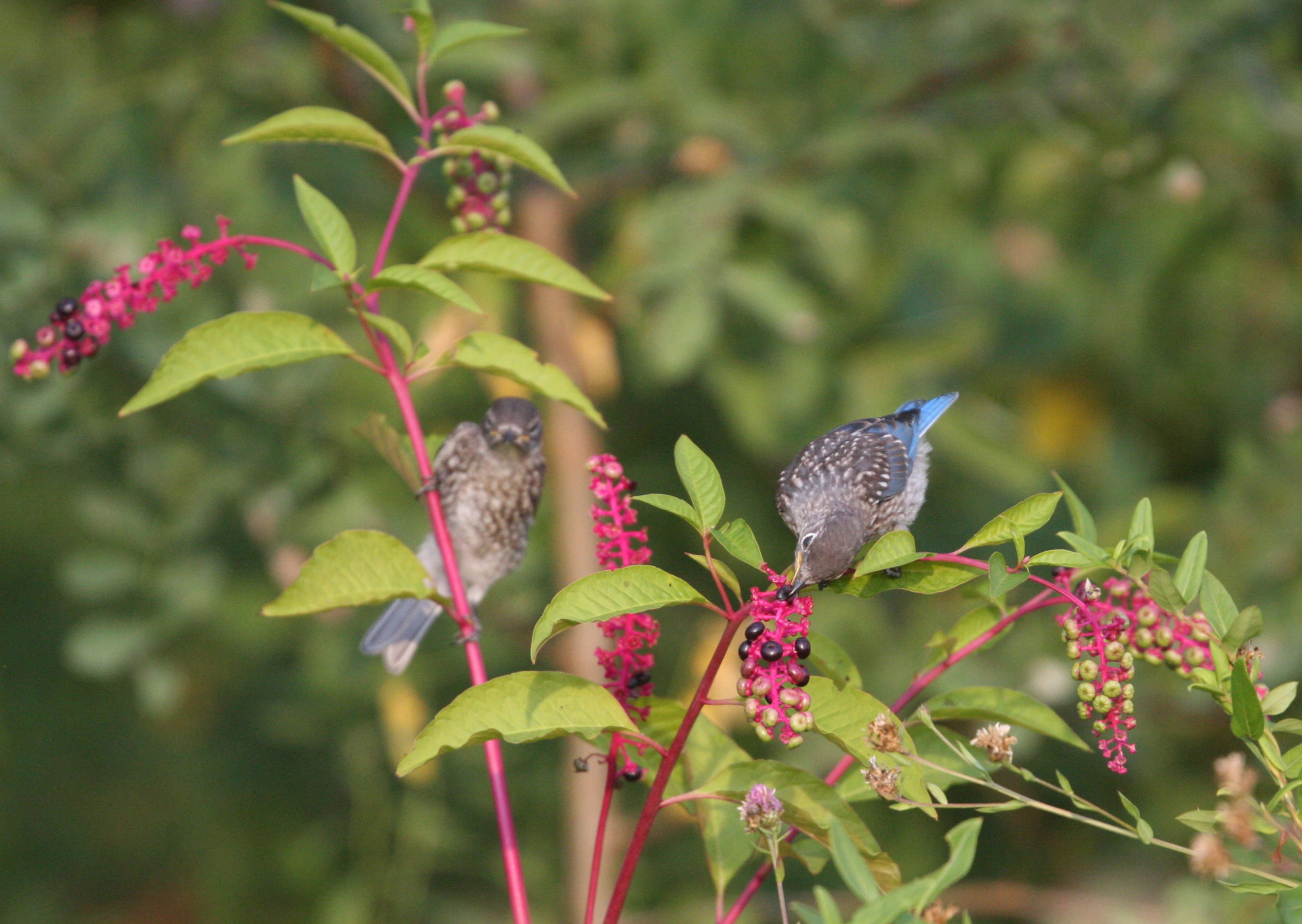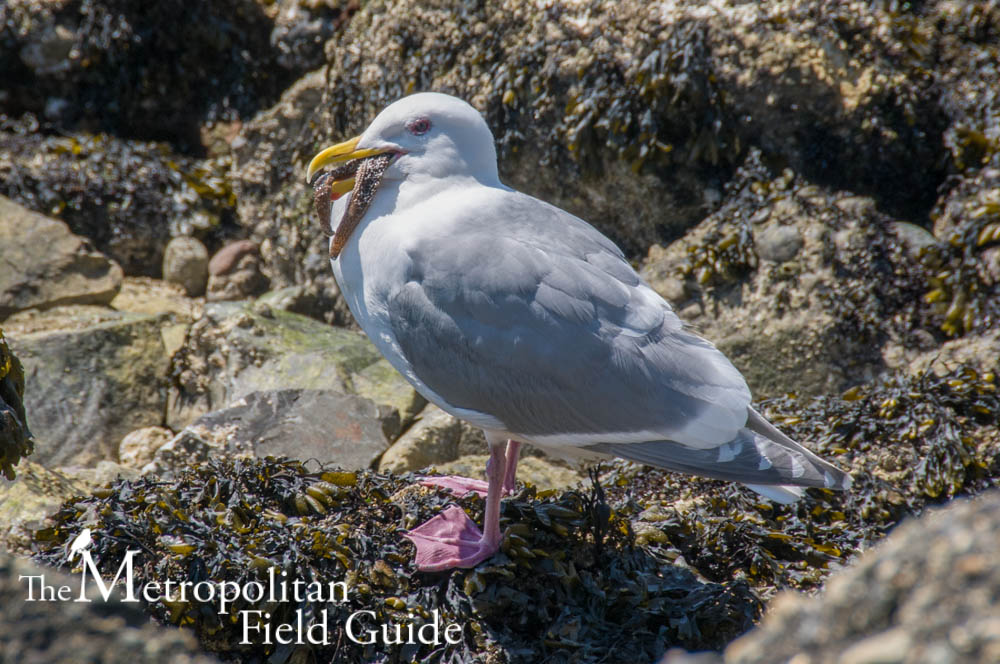(Striped Skunk via vladeb on Flickr)
On Being Misunderstood is a new feature at The Metropolitan Field Guide which will look at the variety of flora and fauna we live with which are too commonly misunderstood. From plants to wildlife, many of our daily interactions with these species are often negative or confused. Many of these reactions are based on misinformation. This new feature seeks to combat these misconceptions by bringing in guest writers to explain some of these species to us so we all have a better understanding and to set the record straight.
If you would like to contribute to this series as a guest writer, contact me and let me know!

The Striped Skunk (Mephitis mephitis)
by Ivan Phillipsen
From the perspective of us humans, many animals have a single, outstanding feature that overshadows all of their other traits. Giraffes have long necks, snails are slow, blue whales are really big, and so on.
For skunks, the dominant feature is their bad smell. Like many mammals, we humans have a good sense of smell. We tend to avoid and disdain anything that smells foul to us. So skunks often get written off as smelly beasts to be avoided.
Luckily for the skunks, this is exactly what they want: to be left alone.
Humans and most other animals know to steer clear of skunks, to avoid being sprayed with the horrible-smelling fluid that comes out the back end of a skunk. This fluid, called musk, is a finely-tuned chemical weapon that has evolved as a defense against predators, such as wolves, coyotes, bears, and mountain lions. The only wild animal that skunks need to fear are Great Horned Owls, which like most birds have no sense of smell.
Musk is produced and stored (about an ounce at a time) in a pair of anal scent glands. When threatened, a skunk can shoot its musk into the face of its attacker, with accuracy up to 10 feet (3 meters). Little muscles associated with the glands allow the skunk to consciously aim the spray. The mixture of chemicals in musk not only smells bad, but also causes extreme irritation and sometimes temporary blindness.
Spraying musk is a last resort for a skunk, since producing the fluid is costly in terms of energy and time. A skunk will first posture with a raised tail, hiss, and stamp its feet when threatened. If all that doesn’t work, then it’s time to spray.
The striking black and white markings of skunks are a warning to predators, in the same way that many deadly poisonous frogs are brightly colored. A predator that has been ‘burned’ by a skunk will remember the awful smell and irritation it experienced when it sees those bold black and white markings the next time.
Other traits shared by skunks are a cat-like body with short, muscular legs and a large, fluffy tail. The long claws on their front feet are used for digging up insects and worms, as well as for excavating dens. Skunks are omnivores that eat a wide variety of foods, including invertebrates, small mammals, amphibians and reptiles, eggs, berries, nuts, and roots.

Striped Skunk by Ivan Phillipsen
There are several skunk species in North America, the most familiar and widespread of which is the striped skunk (Mephitis mephitis). This species is cat-sized, up to 32 inches long (81 cm), and has a pair of broad, white stripes running down its back. When it sprays, the striped skunk keeps all four feet on the ground and bends its body so that its face and anal glands are pointing in the same direction (the spotted skunk does a handstand when it sprays!).
The preferred habitats of the striped skunk are woodlands and grasslands. This species is found throughout the U.S. and much of Canada. It has adapted well to living in farmlands and suburban areas. It is most active around sunset and sunrise (i.e. it is crepuscular).
City-dwelling people who have never encountered a live skunk might still have a sense of what striped skunk musk smells like. Skunks are often killed by cars as they roam in agricultural and suburban areas. They have poor eyesight and cannot see cars approaching. Long after a skunk becomes roadkill, its distinct smell lingers and wafts along the highway.
Other people have more direct contact with skunks and may consider the animals a nuisance. Skunks sometimes make their dens underneath porches and houses. They will eat crops and pull up lawns to look for grubs. Being omnivores with broad palates, skunks like to pick through human garbage and are fond of cat food. They share these habits with raccoons. They also eat honey bees, which can be a bother to beekeepers.
Dogs aren’t as savvy as their wild canine relatives and tend to harass skunks, instead of leaving them alone. Dogs get blasted with musk, then their owners have to clean them up. Tomato juice doesn’t work, by the way. Skunk musk can be neutralized using a solution made by adding ¼ cup (60 mL) of baking soda to a quart (0.95 L) of 3% hydrogen peroxide.
In general, skunks keep to themselves and do very little harm, if any. They can be beneficial when they eat pest insects or rodents. Nevertheless, people sometimes kill them or forcibly relocated them. When the presence of a skunk just can’t be tolerated, relocation is certainly the most humane approach.
Skunks are charming animals that are a pleasure to observe, if you are lucky enough to have the opportunity. Because they are so confident in their ability to ward off predators, skunks are more relaxed around humans than are many other mammals. They are gentle and easy-going, compared to their hyperactive weasel relatives. Many people even have skunks as pets.
There’s really no need to fear skunks or condemn them as smelly nuisances. We should instead celebrate them as the fascinating, resourceful animals that they are.
About Ivan Phillipsen – Ivan Phillipsen is a naturalist who loves to share his knowledge of wild things and places. You can check out more of Ivan’s photos and writing on his blog, Wild Pacific Northwest.







Lovely article, Ivan, about fascinating animals. Smelling skunk doesn’t always mean that a skunk is near. Here in the niortheast, such a smell could mean skunk cabbage rather than skunk. And over the past few years, especially in certain urban settings like NYC, the smell is more likely to be caused by your neighbors smoking new strains of marijuana that smell remarkably like, yes, you guess it, skunk! We do have skunks in Manhattan, although mostly up near the northern tip of the island. For a while, I was smelling them everywhere, in the parks and the streets, and was starting to wonder what the heck was going on. I was enlightened by younger people in my life, who were pretty amused by my confusion.
Although I’ve never seen one in inner SE Portland, we do smell them and a neighbor’s dog got a good spray in their back yard recently and they had quite a time removing the smell from the dog and the interior of their house and furniture.
A great post as always Ivan. I always love to see someone speaking up for the “bad guys.” A dog and skunk story is one of our family’s classic memories. One night my childhood dog (a little poodle/terrier mix no bigger than a large rat!) came home smelling badly of skunk. It was late and stores were closed. All my mom had was frozen chunky tomato sauce. It helped, but as you noted, it doesn’t get rid of the smell completely. Poor dog had chunks in his fur for days! 🙂
Even though my dogs have been sprayed many times, I’m a big fan of skunks. Sweet little creatures who deserve more respect! I’m a beekeeper too, but it’s easy enough to prevent skunks from raiding your hives. They aren’t causing me any problems with my bees. Great post!